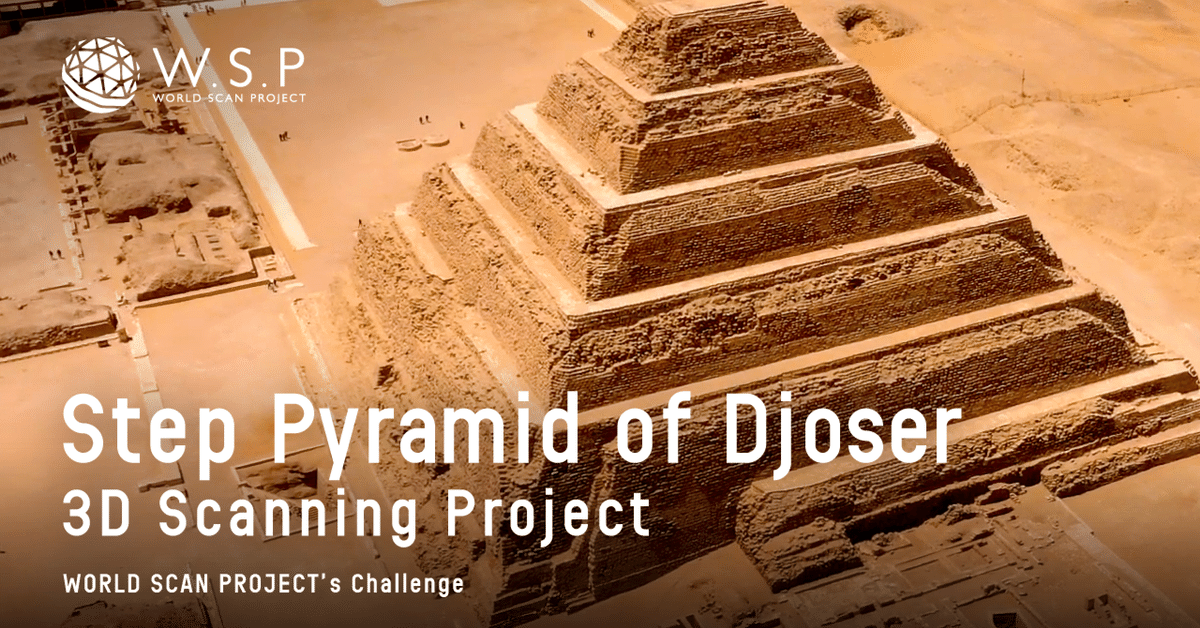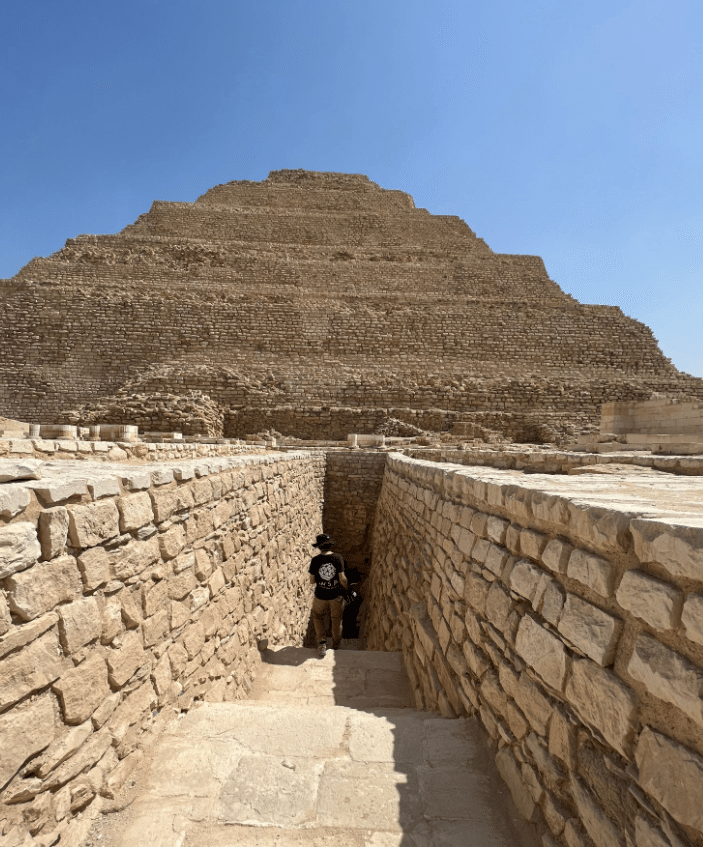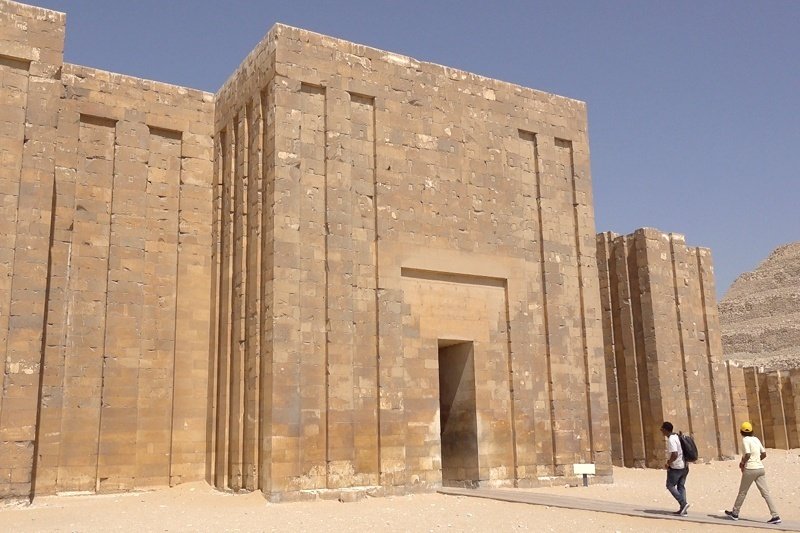
Step Pyramid of Djoser 3D Scanning Project - WORLD SCAN PROJECT’s Challenge
The Step Pyramid of Djoser, built approximately 4600 years ago, is the oldest pyramid and a significant site symbolizing the evolution of ancient Egyptian architectural techniques. World Scan Project (W.S.P.) conducted a joint survey of the Step Pyramid with Dr. Yukinori Kawae, an Egyptologist at Nagoya University and an Emerging Explorer of the National Geographic Society.
The Step Pyramid Complex
The Step Pyramid was constructed during the 3rd Dynasty by King Djoser (also known as King Netjerikhet) at Saqqara, a necropolis on the west bank of the Nile River, about 30 km south of present-day Cairo.

A "pyramid complex" was built around the Step Pyramid, including mortuary temples, temples, and courtyards. This complex is enclosed by a massive wall approximately 10 meters high and 1,645 meters long. The wall has regular indentations to hold about 1,680 blue faience tiles, evoking the vivid and majestic scenery of the time when it was built.

Additionally, the hypostyle hall made of limestone is the first of its kind in ancient Egyptian history. The design of the columns is inspired by the plants that thrived in the "primordial marsh" in ancient Egyptian mythology, creating a space that evokes the beginning of the world. This concept was later incorporated into subsequent architectural structures.

Photo by Maveric149 via Wikimedia Commons (CC BY-SA 3.0)
Moreover, on the northern side of the Step Pyramid, there is a sealed chamber called "Per-tut (House of Statues)" made of large stones. The "Per-tut (House of Statues)" is a room designed to house statues of the deceased, and peeking through the holes in the walls, one can see a statue of King Djoser standing silently. The statue's gaze is directed towards what was then considered the North Star, symbolizing the king's soul ascending to the unsetting North Star.

From Mastaba Tombs to Pyramids
The pyramid complex of King Djoser, built through innovative efforts, was originally planned to be constructed as a rectangular mastaba tomb, similar to the royal tombs of the Early Dynastic Period. However, through six extensions by the architect Imhotep, it transformed into a step pyramid, with the mastaba tombs stacked upon each other.
This repeated action of stacking new structures on top of old ones is thought to reflect the ancient Egyptian view of death and rebirth. Additionally, the stones used for the extensions were placed at an angle, focusing weight inward and preventing collapse outward, showcasing the advancement of ancient Egyptian construction techniques.

Photo by Jon Bodsworth via Wikimedia Commons

The pioneering challenge was not limited to structural changes. The change in materials used for the royal tombs was another novel approach, contributing to the enduring presence of the Step Pyramid. During that time, mastaba tombs were mainly constructed with sun-dried bricks and wood. Imhotep, aiming to create a tomb that would last forever, attempted to build with stone, leading to the creation of the pyramid shape that continued into later periods. Without Imhotep, pyramids might not have existed, making him one of the significant contributors to ancient Egypt's legacy.
Inside the Step Pyramid
The interior of the Step Pyramid, expanded multiple times, features a complex structure centered around a 28-meter-deep shaft extending from the foundational mastaba tomb to the burial chamber. Passages, royal tombs, and storage rooms intermingle like a labyrinth.

In some parts of the passages, three "false doors" are depicted, allowing the deceased's soul to travel between the afterlife and the living world to receive offerings. Reliefs of the Sed Festival, wishing for the king's rebirth and resurrection, are also carved there. The area around the false doors was beautifully decorated with faience tiles, reminiscent of the primordial waters of Nun. However, most of these tiles have been removed and are now housed in museums worldwide, including the Metropolitan Museum of Art.

The sarcophagus in the burial chamber is constructed by stacking four blocks of granite, reaching a height of approximately 3 meters, making it the largest in the world. In addition, the top of the sarcophagus is sealed with a 3.5 ton granite block, reflecting the ancient Egyptians' strong desire to protect King Djoser's resting place from tomb robbers.

Bringing the World, the Future, and Curiosity Closer
The Step Pyramid and its complex buildings are significant sites that redefined royal tombs and marked a historical turning point, leaving a profound impact on later generations. Today, restoration work is ongoing based on its preserved state through 3D scanning technology.
In the restoration efforts, the World Scan Project is working to meticulously record the site using advanced 3D scanning technology to provide clues for restoration. Our goal and mission are to utilize digital technology to help people rediscover the value of the site and raise awareness for its preservation. If you are interested, please follow the activities of the World Scan Project and support our efforts.


Please also check out this video about the Step Pyramid of Djoser.
この記事が気に入ったらサポートをしてみませんか?
